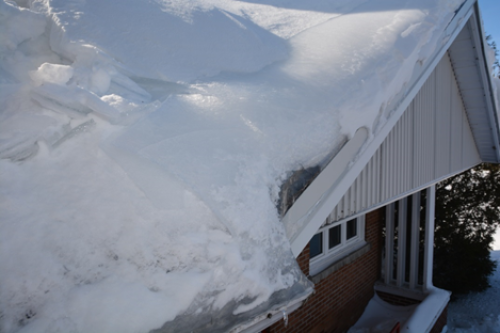LAVAL 1 800 361-0338
Lévis 1 866 835-5335
Roof Ice Dams
Ice dams are accumulations of ice that usually form on the roof of certain types of houses/buildings next to roof overhangs. When snow melts on a roof, these dams promote the accumulation of water and significant infiltration inside the building. The question we propose to answer is the following: why are these houses/buildings affected by ice dams and not others?

The rules of the art in the design of roof constructions provide measures adapted accordingly to the snow on the roofs combined with low temperatures occurring every year. In fact, attics are not heated areas, but house ceilings are insulated and a vapor barrier is installed to reduce the heat and moisture transfer from inside the house air to the attic. Note that each attic should have ventilation in order to drive out moisture and maintain the temperature of this space in equilibrium with the outside.
In the event of inadequate attic ventilation and improper ceiling insulation composition, warm and humid air from inside the house can accumulate in the attic and cause snow melting and/or condensation on the higher part of the roof. However, the roof overhang (portion exceeding the wall of the building) is colder, causing water to freeze and turn into an ice dam (CMHC image). In both cases (condensation and ice dam), it can cause water infiltration in winter, especially during periods of warm weather.

The installation of heating wires on the roof overhangs can temporarily resolve the problem of ice dam formation; however, it does not correct the deficiency of the building envelope, which is the root cause and which remains to be identified and corrected at its source to prevent other problems such as deterioration of the roof frame.
In summary, ice dams can form on the roof overhangs of houses/buildings and cause water to infiltrate inwards during periods of warm weather or special weather conditions during winter. They are generally related to poor attic ventilation or other building envelope deficiencies related to insulation that can also cause condensation problems.
by Fabio R. Melo, Eng. M.Sc. - Civil Engineering Department


